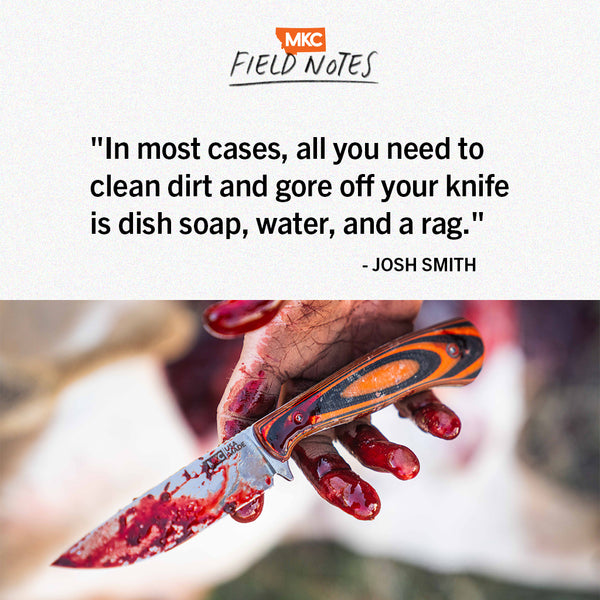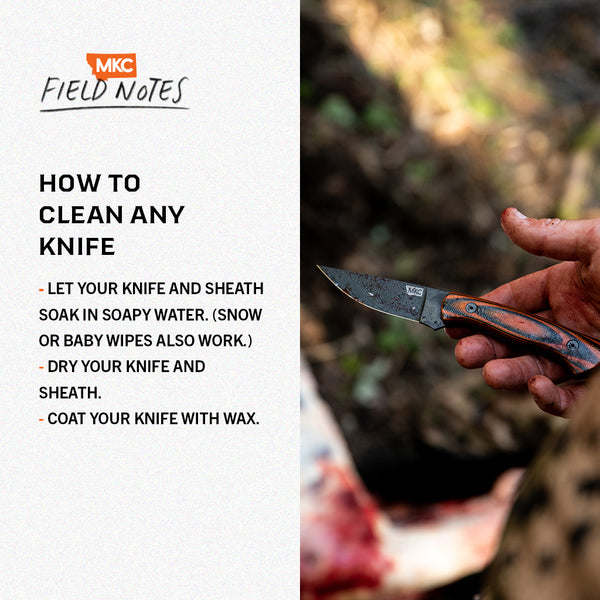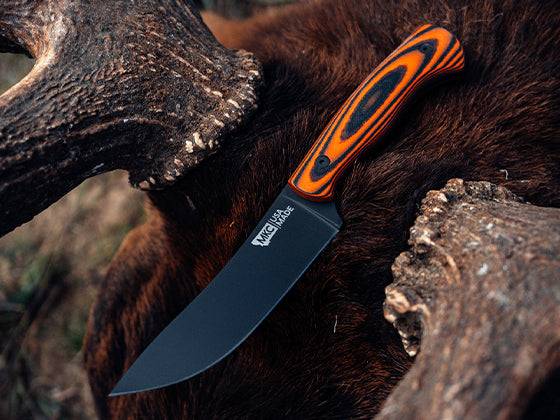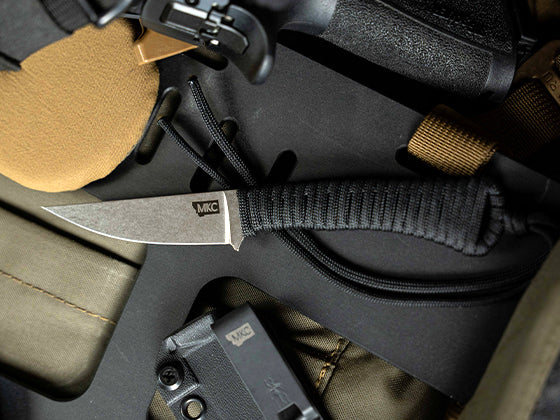Proper knife care isn’t difficult, but there’s a method to it. Many people try to clean their soiled knives with steel wool and other abrasives. This tactic often does more harm than good and should only be used as a last resort.
Let me teach you how to clean a knife the right way. If you want to maintain your blade’s shine for years to come, follow these steps.

What You Need to Clean a Knife
In most cases, all you need to clean dirt and gore off your knife is dish soap, water, and a rag. Let your knife soak in soapy water, and give it some time. Then, clean it the same way you’d clean a kitchen knife.
Of course, you may not have access to a bucket of soapy water in the field. I like to carry baby wipes in my pack to clean fat and grime off my blades. They work great in cold conditions when fat likes to stick. A rag is handy, too.
I usually keep enough water in my pack to clean to an acceptable state. I pour a bit of water on my knives and scrub them with my hands or a rag. This usually gets the worst of everything off until I can clean my knives thoroughly at home.
You can use snow, too. Since snow is mildly abrasive, it lends itself well to a quick clean.
Try to clean your knife each time you use it. Your blade won’t rust if fat is stuck to it — grease is a protectant, after all — but wash off anything else, like blood, immediately.
Leave your knife out of its sheath to dry once you’ve cleaned it. It’s good to clean the sheath at this time, too. Soak it with your knife (as long as the material allows it) and clean the inside pocket with an old toothbrush.
Cleaning, Waxing, and Oiling
Many blades are ready to use again after a good wash and dry. However, it’s good to rehydrate your knives with some blade wax after cleaning them. Waxing helps maintain your blade’s longevity.
I rarely keep blade wax in my pack while out on the hunt, but I do make sure to wax my blade before I leave and after I get back. Our blade wax works well for all blade and handle types, especially leather and wood.
Removing Rust and Restoring Your Blade
A rusty hunting knife needs a little more help than soapy water alone can provide. There are many ways to restore rusty knives, and the method you choose depends on the level of rust you’re tackling:
- Remove light rust with steel wool or high-grit sandpaper and a good soak in some WD-40.
- Vinegar is usually enough to etch away medium rust on stainless steel blades.
- Muriatic acid is the nuclear option for heavy rust on seriously damaged stainless steel knives. I detailed this process in a recent post.

Cleaning and Maintaining Different Materials
Different blade, handle, and sheath materials require different levels of care.
You might think your Damascus steel needs a unique care routine. That’s a common misconception. Most Damascus contains carbon steel, so you can treat it like any other 52100 blade: Clean it promptly, dry it, and wax it.
We recommend taking the same approach with stainless steel, despite its increased hardiness compared to carbon steel. MagnaCut steel, in particular, is known for its rust-resistance and ease of maintenance, which is why we use it in so many of our knives. That said, every blade needs a minimum of basic care if you want it to last a lifetime.
Leather and wood handles and sheathes sometimes need a little extra care. Leather especially loves a good oiling once in a while, then a coat of wax to protect everything after. Wood handles benefit from oil and wax after cleaning, too, but even G10 plastic feels more supple after a good waxing.
Leather doesn’t like exposure to hot, soapy water. Instead, clean it with an oiled rag or cloth. If you really need to, clean it with a leather-safe oil-based soap and a small amount of water. Don’t rush the cleaning process, and let it dry in a cool, shady place. Keep moisture away from the inside of leather sheaths, as it can make them lose form.
Wondering how to clean a knife with a paracord handle? I don’t do anything different — a soak in hot, soapy water generally gets the gunk out.
How to Clean a Knife: Final Thoughts
Your knife-cleaning routine doesn’t have to be special or complicated, but it does need to be consistent. However you choose to do it, building that routine is essential to maximizing your blade’s longevity.
If, despite your best efforts, your MKC blade develops rust you’re not comfortable addressing at home (or you don’t want to!), take advantage of our Generations Promise®. Though we can’t reverse the damage extensive rust leaves behind, we’ll restore your knife to working condition for free.
by Josh Smith, Master Bladesmith and Founder of Montana Knife Company







































